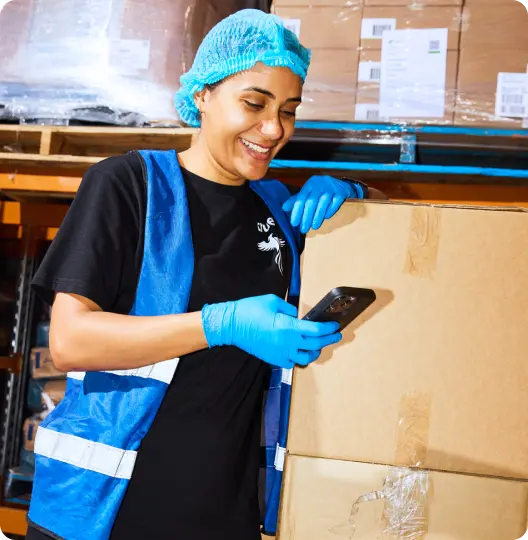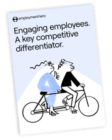Key learnings from HR Tech Festival Asia 2024
Gain valuable and thought-provoking insights from industry leaders which will shape your people management strategies for the future.
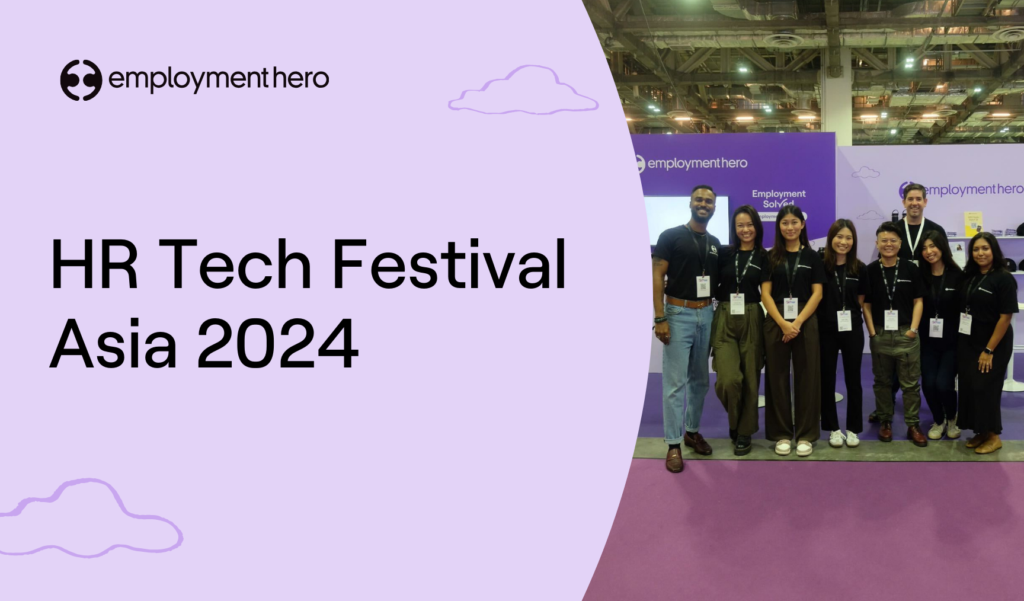
Did you attend the HR Tech Festival Asia 2024? We definitely did — it was a power-packed event, and our team had a great time chatting with everyone who came to say hello and learn more about Employment Hero.

Our Managing Director, Kevin Fitzgerald, even took to the stage to share about empowering the future of SMEs through digital strategies for talent and growth. Did you manage to catch that session? We hope you did and walked away with lots of new learnings!

With 6 conference tracks and 110 insightful sessions across both days, we gained valuable insights from various industry leaders. And so, it would be beneficial to share these learnings with the wider community too!
Regardless of whether you attended the event, we hope you’ll find these key learnings thought-provoking and influential in shaping your HR management strategies for the future.
1. The future of work: Creating value through innovative HR strategies and technologies

The topic of AI and its impact was a huge focus.
The speakers at this panel discussion were:
- Parul Munshi, Workforce Transformation Partner & Regional Sustainability Consulting Leader at PWC Southeast Asia Consulting
- Aslam Sardar, Chief Executive Officer at the Institute for Human Resource Professionals (IHRP)
- Aileen Tan, Group Chief People & Sustainability Officer at Singtel
- Akarin Phureesitr, Chief People Officer at Central Pattana
What are your perspectives towards generative AI, and how do you think it will impact the role of HR?
To kick off, Aileen mentioned that it was important to consider how you can use generative AI to augment the jobs you do. She shared how Singtel introduced Microsoft 365 Copilot to employees at work to increase efficiency and productivity. Employees were strongly encouraged to adopt and use the tool to help them at work.
Aileen strongly exclaimed that whilst generative AI can do many things, it still can’t do what humans do. For example, when preparing a speech, you can use ChatGPT to create a skeleton structure of what you want to cover, but you will have to add your life experiences, your personality, and your flavour to it. AI can’t do everything!
Akarin highlighted that HR professionals today need to be more thoughtful in introducing and trialling tools, gathering feedback, and finding a way to show it’s a worthwhile investment. Aslam further added to that by emphasising that the competencies of HR need to evolve and adapt to how the technology landscape is changing.
The Institute for Human Resource Professionals (IHRP) recently released the SkillsFuture Jobs-Skills Insights Report, which revealed that most in-demand skills in HR now include AI competencies, with a 97% growth rate from 2021 to 2022.
Ethics is also going to play a very important role in organisations, as HR will need to assess the tools used in acquisition and management. Akarin believes that HR should not remain as a ‘backstage’ support role, but rather drive productivity and change in organisations.
In an example, he mentioned that his company’s IT department is creating a personal assistant for every employee, to help everyone schedule their meetings efficiently. That would solve the gap of having to constantly coordinate meetings across multiple calendars, which is often time-consuming and manual.
How does HR and sustainability come together?
Aileen believes that for an organisation to be sustainable, it must be purpose-led. In the example of Singtel, its purpose is to empower every generation. But how does it sustain the business long term?
When you think about a purpose-led organisation, you have to do well in three areas:
- People: Committing to making a positive impact on society — through fair work practices, encouraging upskilling and volunteerism, etc.
- Planet: An organisation’s impact on the environment — making changes that reduce its carbon footprint, using ethically sourced materials, cutting down on energy consumption etc.
- Profit: The financial return the organisation generates for shareholders — adopting sustainability initiatives to drive business success, instead of maximising profits while reducing costs and mitigating risks.
This business concept is known as the triple bottom line. It espouses that firms should measure their social and environmental impact in addition to their financial performance, rather than solely focusing on the standard bottom line — generating profits.
Sustainability cannot be run by a department. Everyone needs to lead the sustainability in the organisation. You need to ensure that people are clear and aware of what they are doing, and what they are aiming for. In the case of Singtel, every employee can communicate about their decarbonisation strategy because they’ve all been informed and are aware of the organisation’s goals.
In essence, sustainability cannot be the top flavour of the month. It is a long journey where you have to be thoughtful about the strategy, actions and measures you take.
As for human sustainability and wellbeing — think about some things you’re proud of in your organisation. When you have an employee that feels like they can bring their best to work every day, can you imagine the energy and impact that can create? Think about the new flexible work arrangement guidelines and use that to drive sustainability for your organisation.
At Singtel, the key is to drive the BIG culture.
- B is for Belonging — feeling psychologically safe to speak up, experiment, and feel included in the organisation.
- I is for Impact — wanting to make a difference.
- G is for Growth — believing that constant learning and upskilling is essential. Over time, technological, social and geographical changes will disrupt how we live, work and play. As such, most people can’t have a single track career pathway. It’s not sustainable and everyone will be irrelevant very quickly.
If everyone in Singtel feels that they are BIG — the optimism, positivity and productivity that can be derived from over twenty-six thousand employees will be incredibly powerful. You can use Singtel’s example to create and shape something similar in your organisation too.
2. Future-proofing your workforce and enhancing business resiliency in the age of AI

This panel discussion covered the importance of prioritising workforce upskilling and reskilling in bridging the skills gap and digital divide, supporting people development and change management with new age tools, as well as tips on ensuring business sustainability with a skills-based talent model and agile work design.
The speakers at this panel discussion were:
- May-Ann Lim, Data Governance Executive Director at Access Partnership
- Dean Tong, Managing Director and Head of Group HR at UOB
- Melissa Kee, Chief People Officer at Temus
- Terence Chia, Cluster Director at Infocomm Media Development Authority (IMDA)
- Tan Toi Chia, Chief of People, Organisation & Communications at StarHub
What skills do you need in the age of AI?
Dean kicked off the discussion by sharing his experience within UOB. It’s essential to uplift everyone’s skills in the organisation, and in banking, you can break it down into three parts — the front, middle and back.
For the front office, they are using AI to predict what customers need and want, and that shapes their product offerings and promotions. In the middle, banking is all about risk management. Through AI, you can be more acute in decision making – using the right and wrong decisions you have made in the past and applying it to today’s decisions.
Scams are on the rise, and they are using a lot of resources to upgrade the capabilities of UOB to prevent scams. AI helps to identify and profile the transactions, so they can identify when to intervene and improve the security of transactions.
As for the back end, using AI helps them better identify people they want to hire. How do you tell if someone is honourable? If you can capture data points across your entire interaction with the candidate, from scheduling the interview to interview, salary negotiations and more, capturing all this data and feeding it to AI helps to improve the system and allows the bank to better identify potential hires.
In essence, using AI helps them to do things better, and allows them to do better things.
Melissa also shared her opinion based on her experience. In Temus, her team is focused on expanding the digital talent pool in Singapore and the region. They considered questions like: How do we prepare the workforce for the future? How do we build digital capabilities in every single role — not just tech-related roles? Their mission is to unlock societal and economical value.
The tech skills that are relevant can be broken down into two components:
- New skills in AI — machine learning, natural language processing, programming, etc
- New skills in other roles — AI will be leveraged to augment roles that exist today
We need to think about the impact of AI in every job moving forward. We also need to understand what is responsible AI. All of us need to understand the design behind it, because that drives accountability and understanding around the fairness and ethics of AI. It ensures we prevent bias and helps to manage privacy issues related to employee data and security. All these will continue to shape businesses and the way we move forward.
Terence shared his perspective based on his experience with the IMDA. AI can now create, converse, code and more — to the point where sometimes you can’t tell the difference between talking to AI and humans. It can do so many things like generating computer programs, data analytics, and so on. What role then, do humans play in this space?
He believes that we need 3 ‘D’s — Design, Direct, and Debunk. ‘Design’ means that you have to look at an entire system, and create a system that uses the best of both capabilities, human and AI. ‘Direct’ means you have to create a language that applies to both, and ‘Debunk’ means you have to find out what’s wrong and how to diagnose it.
Responsibility, safety, trust and judgement is going to be even more important now in generative AI, but humans still need to be at the centre of decision-making. We need to be using it responsibly.
How urgent is the AI reskilling agenda for the government?
Terence shared some valuable insights given his position with IMDA. It is both an urgent and long-term issue, because AI is here and it’s changing the world very quickly. However, it’s also long term because Singapore has been preparing for this for decades.
At the core of AI, it’s all about data, the flow of data, and what you do with data. Infrastructure and hardware needs to be there, and Singapore has planned for that years in advance. When it comes to software, we need a solid education system, and Singapore has had a strong foundation in STEM. In recent years we’ve increased the intake of people in Information and Communications Technology (ICT) courses (doubled, in fact) and skills-based hiring ensures people are hired meaningfully into the workforce.
The TechSkills Accelerator (TeSA) programme also creates a win-win position for both employers and employees, building and developing a skilled ICT workforce for Singapore’s digital economy.
What does the industry need and what upskilling efforts have you encouraged your team to go for?
In the example of Temus, they’ve partnered with the IMDA for the Step It Up programme, as they recognise that the future is digital, and want to encourage professionals not in the tech industry to pursue new tech skills. It comprises a 4-month bootcamp on tech skills that the industry needs, and uses a ‘place and train’ method rather than a ‘train and place’ method. They make the commitment to hire people, rather than train people with the right skills and wish them good luck.
As we envision the workforce of the future, think about the impact and possibilities of what the real world challenge you are trying to address entails. Our most important asset is our people, and their tech skills need to be constantly upgraded.
How do you make sure your talent pool is ready to respond to these changes, and motivate them to want to change?
In the case of Temus, it built its own talent AI platform to focus on talent acquisition and development. It leveraged Gen AI to focus on hyper-personalised learning opportunities, and democratised access to learning. The platform enables employees to look at their skills assessment versus the skills and competencies framework of their role (from IMDA), and build their career path from there.
The beauty of leveraging AI is that the possibilities are exponential, and that you’re constantly benchmarked against what skills are needed for your role. At the same time, employees are encouraged to look for other opportunities. They’ve also created their own AI talent coach to help employees get learning recommendations based on all the data points the AI system has collected and analysed. Gen AI enables them to do all these which they were not able to do previously.
Where do employees want to go and how do we enable them to go where they want to go?
IMDA is currently reviewing the skills framework for ICT, creating new tracks that will point employees and employers to careers in generative AI.
In the case of UOB, it launched its upskilling programme, called ‘Better U’, five years ago, focusing on soft skills like nurturing a growth mindset, structured storytelling and more to bring out the human aspect of employees. For people interested in pivoting into more AI-related careers, they have a deep-dive course and also curate programmes with a ‘train and place’ approach.
More recently, UOB have been looking at ‘place and train’ models, and have partnered with Singapore Management University, focusing on post-graduate programmes to bring in newly acquired skills. It’s also partnered with the Monetary Authority of Singapore (MAS) to bring in mid-career professionals and fresh graduates with AI skills, so it can not only use those skills, but influence other parts of the bank to upskill as well.
All in all, it takes a multi-pronged approach to uplift reskilling and upskilling within an organisation — organisations have to constantly refine strategies, track moving pieces, and partner with other organisations.
3 key takeaways
In summary, here are the three key points from this panel discussion:
- AI changes the game for everyone: bringing new efficiencies, new ways to do things, new experiences and more.
- HR must continue to feed into business needs: we need to constantly ensure AI solutions work for the company and within the limitations of the company.
- Constant upskilling is going to be the new normal: how you motivate people to think about their development journeys, what resources you provide to empower them and more will be critical.
3. The ins, outs and best practices to remodelling people and workplace strategies
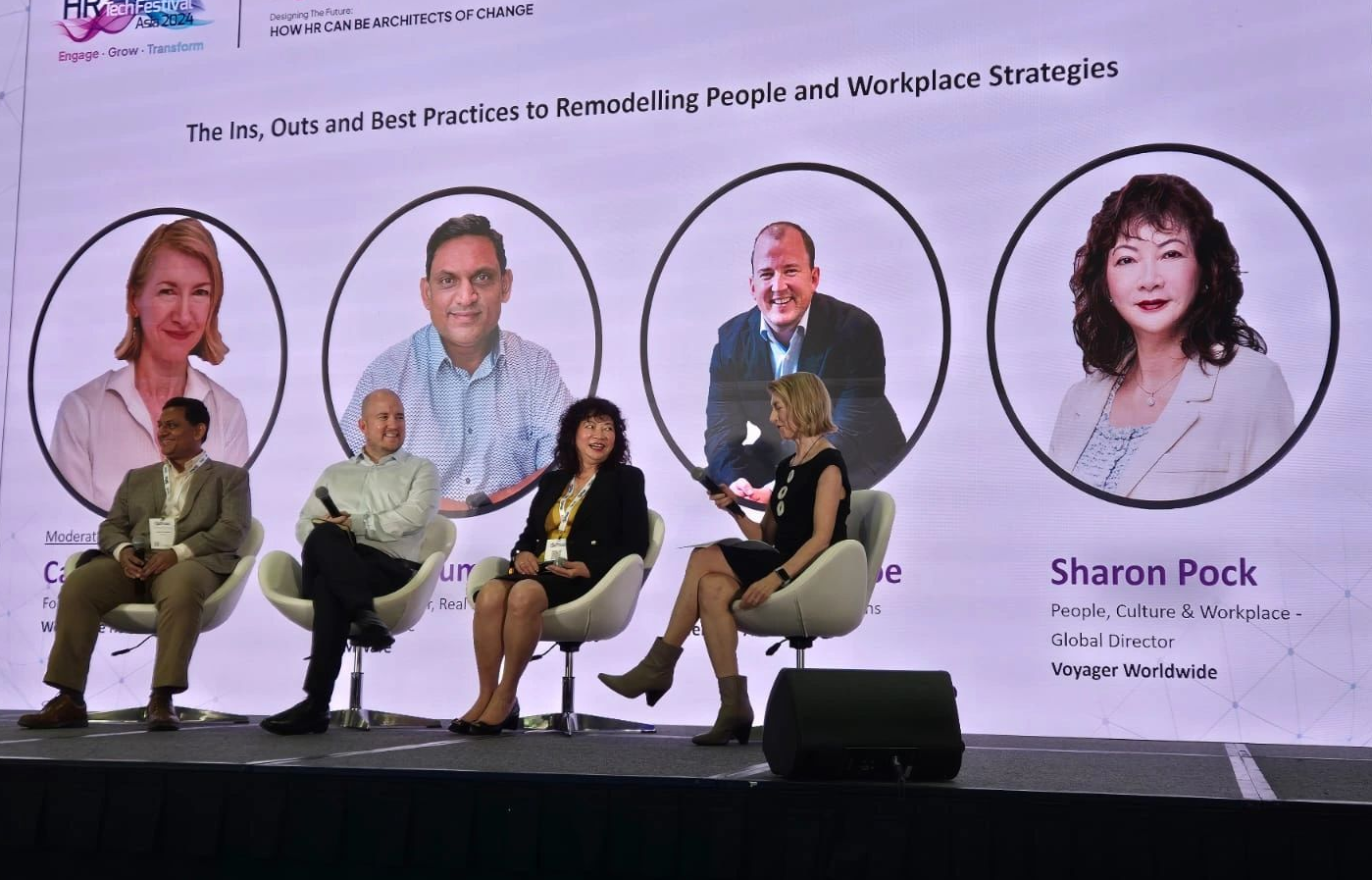
This panel discussion covered how to successfully evolve workforce development and workplace transformation programs, streamlining workplace IT and service delivery to simplify and harmonise work dynamics, as well as future challenges and new roadmaps for work, digitisation and the employee experience.
The panelists were:
- Caroline Burns, Founder & Managing Director at Workplace Revolution
- Sushil Kumar, Senior Director, Real Estate & Workplace (Asia Pacific) at VMWare
- Alexander Boe, Head of People & Operations at Telenor Asia
- Sharon Pock, People, Culture & Workplace Global Director at Voyager Worldwide
In regards to the future challenges of work and the role of AI, Alex kickstarted the discussion by emphasising that it was important for all of us to become the masters of technology, and not subjects of it. Becoming better at what machines cannot do is where we need to focus on, and how we can use the tools we have to further support us.
How do HR leaders find the equilibrium between employee experience and greater efficiency?
People are often jumping on the newest technology, but they tend to forget the human touch.
Sharon shared a wonderful analogy on using automated feeders to feed your pets — sure, it solves the problem of feeding your pet whilst you’re working late in the office. It even comes with voice activation and video capabilities. However, after using the automated feeder, the pet becomes less responsive to you. Why is that so?
It’s because the human aspect isn’t there anymore — it’s all about your relationship and connection with your pet. Every meal time is a precious bonding opportunity, and when that is replaced by technology, the relationship breaks down.
That same logic applies to HR as well. Many HR professionals are excited about introducing an AI chatbot that can help answer the boring questions that employees typically ask, such as onboarding or leave-related queries. Yes, it may save time, but don’t neglect the human touch that HR should still bring to the employee experience.
Even as the HR function is transforming and digitising, Sharon believes it’s important to remember why you’re there for the company. Technology can be an enabler, but be careful to not let it take over everything and be completely hands-off. The efficiencies provided by technology gives us opportunities to explore how to put in place a framework to nurture relationships.
People work best when they have great relationships. HR plays a key role in reminding everyone that at the end of the day, it’s all about the human experience.
What are you doing in terms of building relationships and connecting in a world of hybrid work?
In Sushil’s words, it’s all about how to make an individual employee productive. It’s shifted to becoming employee-focused. The pandemic changed things — it made companies realise that productivity didn’t drop, but the importance shifted to how to build a community, a strong culture that attracts and retains talent. Creating that sense of belonging in the organisation.
At VM Ware, its old slogan used to be “my workplace, my choice”. Now, it has evolved to become “my workplace, my community”. They have more community based programs now that have created more purpose and brought people back together in the office, from ukelele clubs to painting activities, volunteering and more.
How are you using data analytics to improve workplace efficiency and employee experience?
Alexander shared how it’s about being intentional with changes and ensuring that it’s purposeful. In the case of the customer service team at Telenor, it uses data analytics to identify the most common issues they need to solve. Interestingly though, the most valuable insights come from conversations the customer service team has with their clients or customers, which they then share with their product developers and management team. Combining the insights from both avenues helps them achieve a more accurate and holistic view of their issues, and uses the strength of both data analytics and the human touch.
As for the employee experience, it’s crucial to be selective about how we use technology. It can be used for repetitive, menial tasks, but don’t forget about the human touch. A good example would be automating reminders for an employee’s birthday. The task may be streamlined, but human touch remains with the line manager and how they want to approach it to forge stronger relationships within the team.
Combine tech and the human touch effortlessly with Employment Hero
Thank you for reading till the end, and we hope that these insights from talent leaders in the region have been of use to you in some way or another. That’s a wrap — we look forward to seeing you at our next event!
If you’re keen to utilise the strengths of both technology and the human touch to their fullest potential in your organisation, Employment Hero’s the way to go. As an all-in-one recruitment, HR and payroll software, we leverage automation to help you streamline processes and boost productivity.

But we haven’t forgotten the human touch of course! From 360 feedback to 1:1 templates, peer-to-peer recognition shoutouts and employee happiness surveys, you’ll find a comprehensive suite of features in our platform. These empower you to strengthen your team culture, facilitate open and honest conversations, keep morale high and most of all — build strong interpersonal relationships.
Check out our State of Recruitment Report or SME Sentiment Report for more interesting insights, or stay tuned to our Resources page for more exciting content coming your way.
Related Resources
-
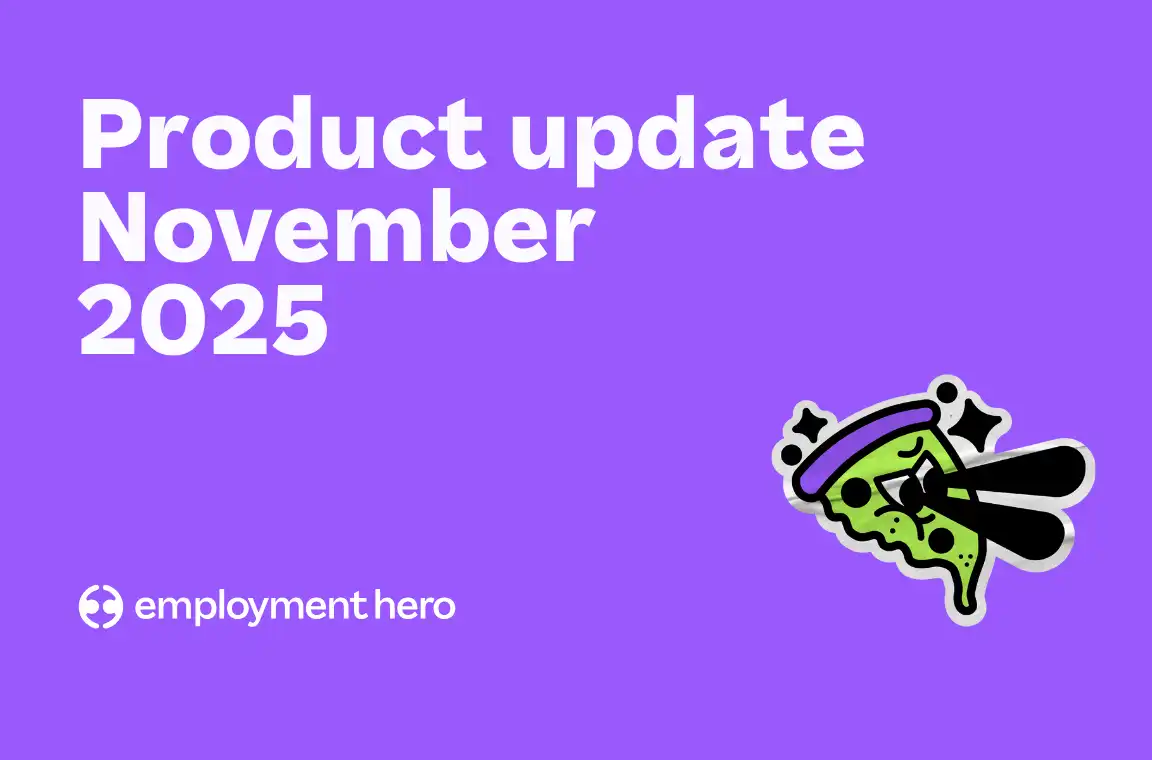 Read more: Product Update: November 2025
Read more: Product Update: November 2025Product Update: November 2025
Welcome to the November 2025 product update from the Employment Hero team. We’ve got lots to share around Workflows, Rostering,…
-
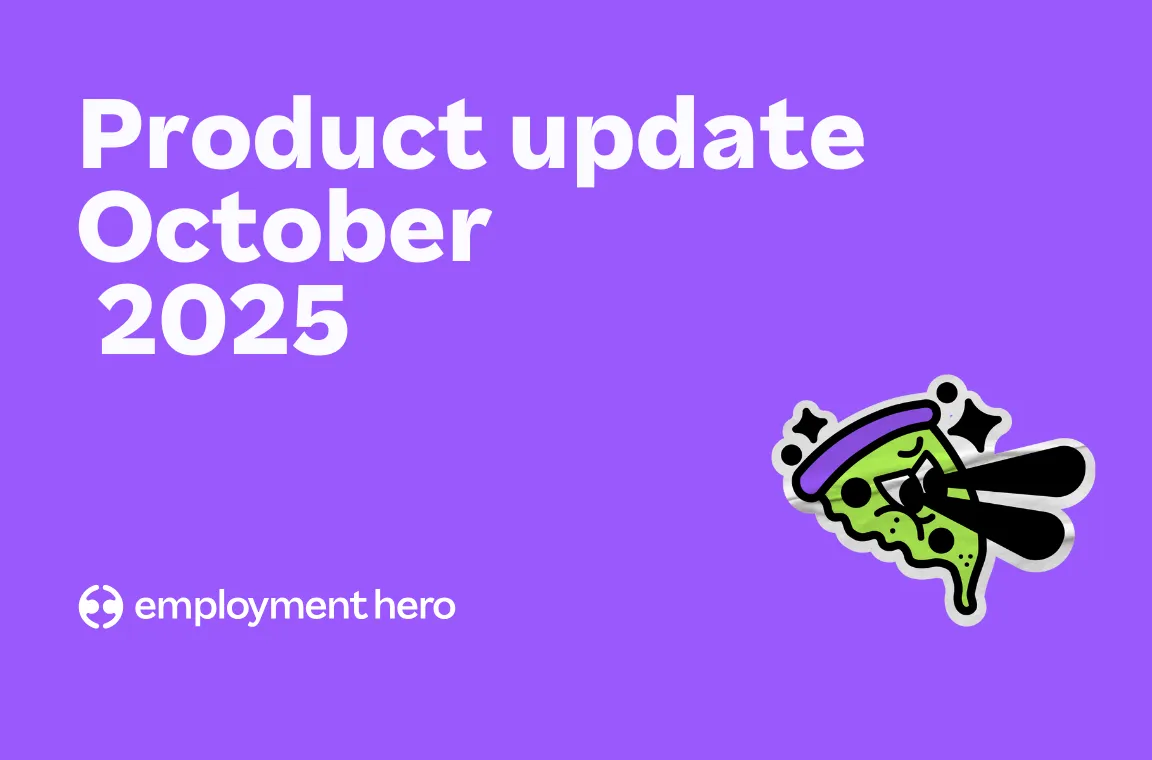 Read more: Product Update: October 2025
Read more: Product Update: October 2025Product Update: October 2025
Our October 2025 update is here for Singapore. Discover OCBC remittance advice, leave balance checks, rostering, timesheets and more. Read…
-
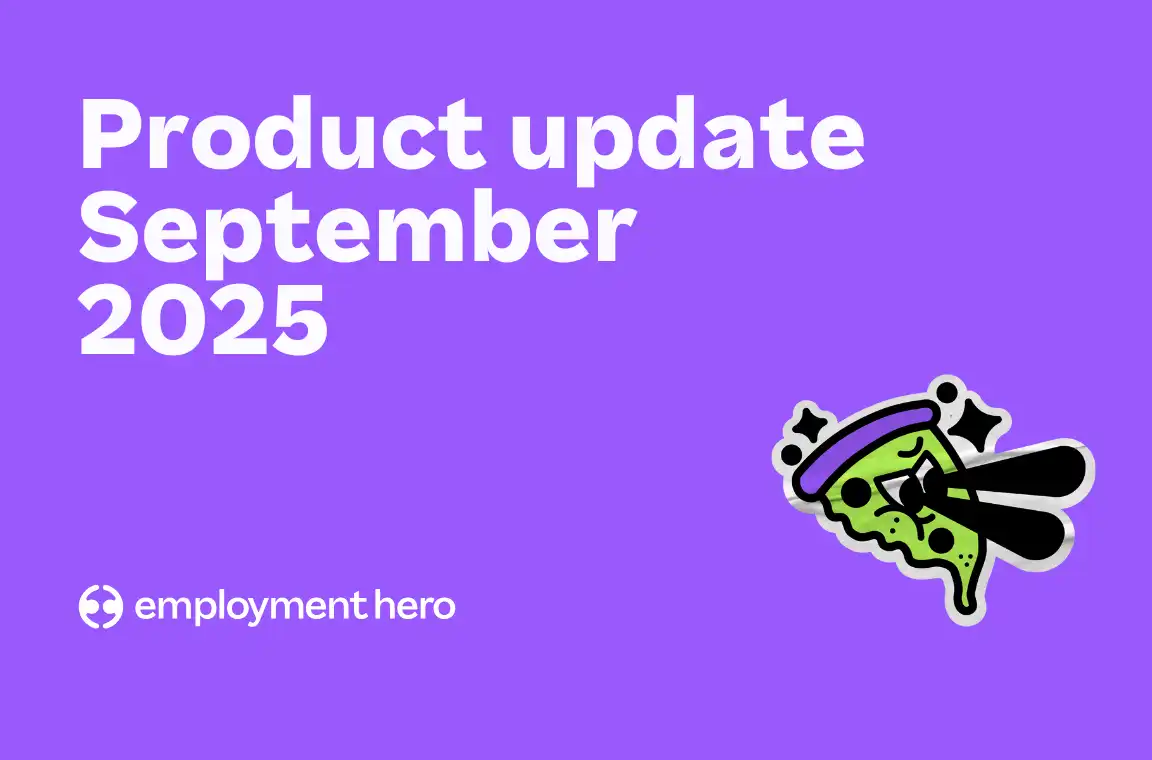 Read more: Product Update: September 2025
Read more: Product Update: September 2025Product Update: September 2025
A big hello from the Employment Hero Product team, and welcome to the September 2025 Product Update.





